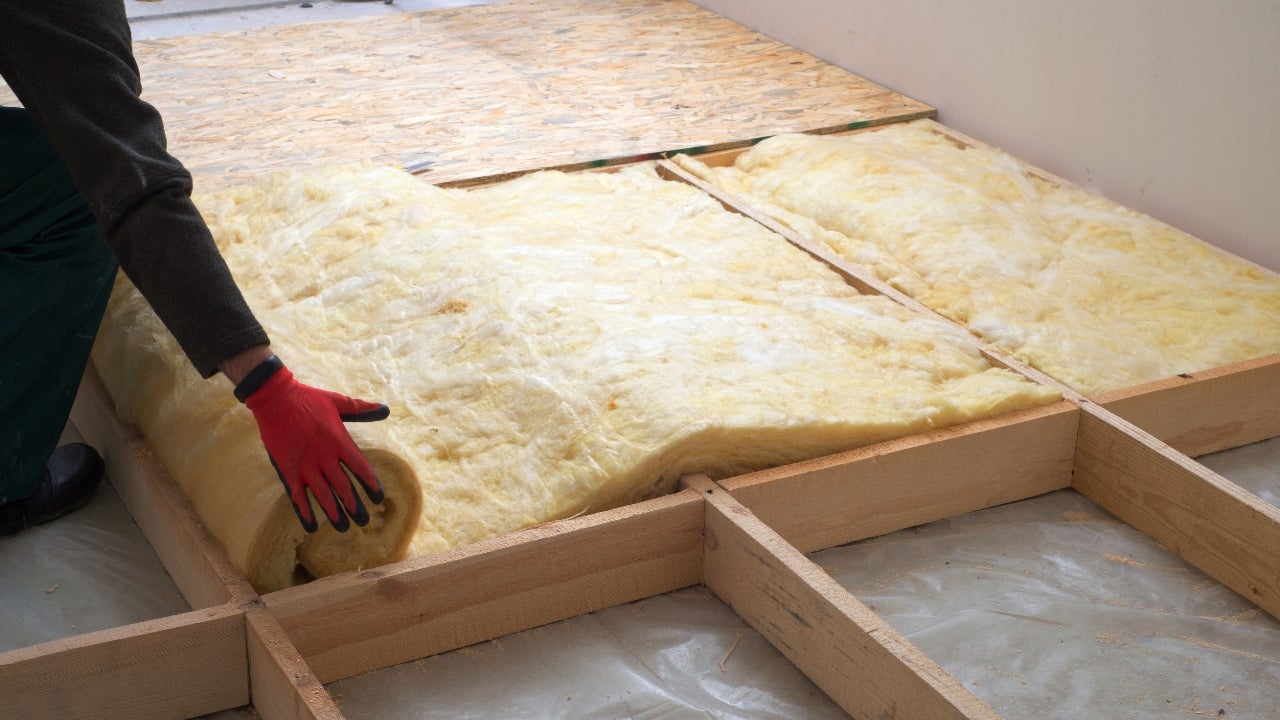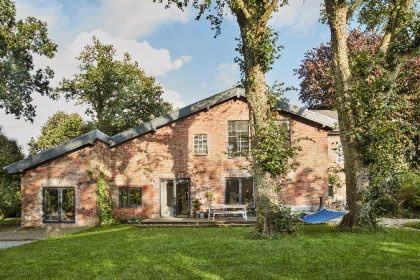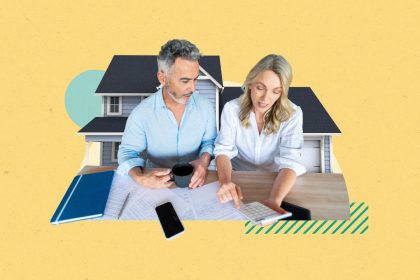Key takeaways
- An energy-efficient mortgage (EEM), also known as a “green mortgage,” can help you buy an energy-efficient home or fund energy-saving home upgrades.
- You can use an EEM to install solar panels, weather-proofing and energy-efficient appliances or fixtures, such as windows — among other improvements.
- You may need a home energy assessment to qualify for an EEM.
What is an energy-efficient mortgage (EEM)?
An energy-efficient mortgage (EEM), also known as a “green mortgage,” is a loan that lets you buy or refinance a home that meets certain energy-efficiency requirements. You can also use an EEM to fund energy-efficient upgrades.
An EEM mortgage can be a conventional loan, an FHA loan or VA loan. As with other types of mortgages, your home serves as collateral for the debt.
Some banks, credit unions and other types of lenders offer their own energy-efficient mortgages. This guide covers EEMs backed by Fannie Mae, Freddie Mac, the Federal Housing Administration and the U.S. Department of Veterans Affairs.
How does the energy-efficient mortgage program work?
Whether you’re buying a home that’s already energy efficient or planning to improve a home that you’re buying, you’ll follow similar steps.
- Get an energy assessment. A certified home energy auditor will evaluate the home’s energy efficiency and, if you’re planning upgrades, suggest a list of improvements and their costs, as well as how much they’re likely to save you. You can find auditors through the Department of Energy and Resnet. An assessment typically costs around $437, according to HomeAdvisor, but you might be able to finance the cost of the report with your loan.
- Apply for an EEM. The process will be similar to applying for a non-EEM mortgage. However, your mortgage lender will take the energy assessment into account when deciding how much to lend you. You may qualify for a larger loan, since the energy savings frees up room in your budget for mortgage payments.
- Contractors complete energy-efficient renovations. If you’re upgrading a home, you can use an EEM to pay a licensed contractor or purchase materials, but you can’t use the funds to pay yourself for work. Typically, improvements must be completed within three to six months of closing.
- Schedule an inspection. Your lender will verify that the improvements were completed and are increasing the home’s efficiency.
You can use an EEM alongside another mortgage, such as a conventional loan or renovation loan, and depending on the type of EEM, you can borrow up to 15 percent of the home’s appraised value. Note that you can also refinance your existing mortgage into an EEM to upgrade a home you already own.
What do EEMs finance?
Each EEM program will specify the improvements you can finance with the funds. For example, the following are upgrades you could fund with a GreenCHOICE mortgage from Freddie Mac:
- Weatherization materials, such as caulking and weather-stripping
- Insulation
- High-efficiency home systems, such as HVAC, and appliances, such as a refrigerator or a water heater
- Low-flow water fixtures
- Energy-efficient windows
Your improvements must be cost-effective, that is, the cost to make the improvement must be equal to or less than the amount you’d save by having it. A trained energy professional can help make these determinations.
Energy-efficient mortgage requirements
To get an EEM, you must meet the lender’s baseline qualifications for a mortgage. For a conventional loan, these include:
- Credit score: 620
- Debt-to-income (DTI) ratio: 45 percent, with exceptions up to 50 percent
- Down payment: 3 percent for a fixed-rate loan; 5 percent for an adjustable-rate loan
- Loan limit: $806,500 for a conforming conventional loan on a one-unit property in most of the U.S.; up to $1,209,750 for the same type of loan and property in higher-cost areas
Remember that, because the lender takes your energy savings into account when issuing your mortgage, you may qualify for a larger loan than if you’d applied for a non-EEM loan.
However, because you’re applying for an EEM, you’ll need to provide additional documentation — including the energy assessment — and may need to meet other requirements.
Energy-efficient mortgage options
Different loan types have different energy-efficient mortgage programs. Here are the options:
Conventional energy-efficient mortgages
If you’re looking for a conventional loan, EEM options include the Fannie Mae HomeStyle Energy loan and the Freddie Mac GreenCHOICE Mortgage.
- Options: The mortgage can have the traditional 30-year term or a shorter duration and carry either a fixed or adjustable rate.
- Borrowing limit: You may borrow as much as 15 percent of the home’s appraised value to make energy-efficient improvements. If you’re buying or refinancing a home, this sum is on top of whatever loan amount you obtained for the purchase or refi.
- Uses: Apart from traditional EEM uses, you can finance mitigation strategies against natural disasters and storms or pay off a Property Assessed Clean Energy (PACE) loan or another kind of energy-efficient home improvement loan.
The Fannie Mae HomeStyle Energy loan doesn’t require an energy assessment if you’re making up to $3,500 in simple “weatherization” upgrades, such as installing insulation or a programmable thermostat, or making environmental or natural disaster repairs or protective upgrades. For the Freddie Mac GreenCHOICE program, that threshold is $6,500.
FHA energy-efficient mortgage
To accompany its FHA loans, the Federal Housing Administration (FHA) offers an FHA energy efficient mortgage (EEM). It’s available with fixed or adjustable rates and in 15- or 30-year terms.
You can borrower the lesser of:
- The cost of the improvements based on the energy assessment; or
- The lesser of 5 percent of the home’s value, 115 percent of the area median single-family home price or 150 percent of the conforming loan limit
With an FHA EEM, you don’t need to qualify for the additional funds that’ll go toward energy-efficiency improvements, but you do need to qualify for the FHA loan first, be it a regular purchase loan or a refinance loan.
VA energy-efficient mortgage
The Department of Veterans Affairs also has a version of an energy-efficient mortgage for eligible military service members, veterans and surviving spouses.
- Borrowing limit: Up to $6,000 for energy-efficiency improvements on top of the VA loan for a purchase or refinance.
- Energy assessment: If the cost to make the improvements is $3,000 or less, you won’t need to do an energy assessment, but you will need to provide contractor estimates.
You might be able to borrow more than $6,000 with a VA EEM, but you’ll need approval from both the VA and the lender to do it.
Energy-efficient mortgage lenders
Many mortgage lenders, including banks and credit unions, offer EEMs. If you’ve already gotten preapproved for a mortgage, it’s worth asking whether the institution offers EEMs. You may choose to work with a green bank.
Many states also facilitate programs for green mortgages. You can ask your state housing finance agency for details. Links to state housing authorities are available in this Bankrate guide.
Pros and cons of energy-efficient mortgages
Energy-efficient mortgages can help you save money or fund certain home improvements and renovations, but they may not be the best loan type for everyone. Consider these pros and cons:
Pros
- Financing for a variety of “green” improvements
- Potential to qualify for a larger mortgage
- Save on energy bills
- Increased home value
- Potential tax deductions
Cons
- Cost and hassle of energy audit/assessment
- Relatively low loan amounts
- Tight timeframe for making improvements
Is an energy-efficient mortgage right for you?
An EEM could help you reduce your energy costs and increase your home value, and getting one might appeal to you if you’d like to buy and renovate all at once. Consider getting an EEM if:
- You want to buy a home that’s already energy efficient. You might qualify for a larger mortgage than with a typical conventional loan.
- You’re buying a home that could use energy-efficient updates — but not too many. Relatively small borrowing limits and tight timelines mean these loans aren’t well-suited for homes that need a lot of help. You’ll want a focused list of projects.
- You’ll live in your home for awhile. Energy-efficient improvements can increase your home value, but you’ll get the most bang for your buck if you also benefit from lower utility bills in the long term.
Alternatives to an energy-efficient mortgage
If you want to make energy-efficiency improvements to your home but need to borrow more than you can get with an EEM — or simply don’t want to deal with the process of an energy audit — here are some other options:
- Cash-out refinance: If you have significant equity in your home, you may be able to cash some out to fund energy-efficient home improvements. Consider a cash-out refinance if you can get a lower interest rate than you have on your current mortgage — but keep in mind that you’ll pay closing costs.
- Home equity loan: When you take out a home equity loan, you borrow against your home equity and receive a lump sum. You’ll pay the money back at a fixed rate over a term of up to 30 years. You can use the money for almost anything, including energy-efficiency upgrades.
- Personal loan: While personal loans tend to have higher interest rates than home equity loans, you can get one even if you have little equity in your home or don’t want to use your home as collateral. You can use the funds to make home improvements, but be aware that you may not receive enough to finance more expensive upgrades, like solar panels.
FAQ
Read the full article here





